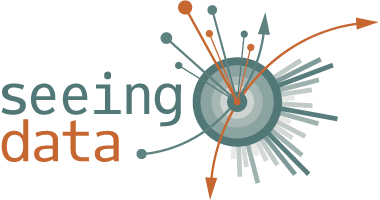Home » Taking time with visualisation » Home » Introduction
Taking time with visualisation
Introduction
On seeingdata.org the ‘Top 5 things to look for’ section guides you through some important aspects of reading visualisations, which are particularly useful when you are in a hurry. Whilst many data visualisations have been designed to be looked at quickly, there are times when you will need to invest more time and effort to fully understand a visualisation. It could be that the subject matter or the analysis is more complex, perhaps involving several different charts. Maybe there is more at stake for you to be able to understand a visualisation, for example if you need to make decisions based on the information. Not all visualisations are immediate and the amount of time you take to read one will depend on the context. But taking the time to engage with complex visualisations is likely to be time well spent and will help you to understand not only the particular chart you are looking at, but other visualisations you might come across later.
In this section, Data visualisation specialist Andy Kirk guides you through how to make sense of visualisations, both in general and with regards specific chart types. Before you begin, here are some important preparation points:
First glance: are you on-board?
At first glance your eyes will probably be drawn to the title and the chart itself. Allow yourself to look briefly, browsing quickly across the whole piece before delving deeper. Recognising your emotional response to a visualisation is an important step in understanding. Acknowledge your feelings about the visualisation: does it interest you? Do you want to know more? Do you like the look of it? Does the look and feel (the ‘form’) of the visualisation attract you and motivate you to want to spend time with it?
If you like the subject matter and the look of the visualisation you are likely to continue to read the visualisation. If you are positive about one of the factors you might persevere despite not being positive about the other factor. If you are neither intrigued by the subject matter nor the look of the visualisation then, depending on circumstances, you might just ditch the task there and then.
Seeking the ‘function’
Once you’ve determined to carry on with a visualisation, ask: what is the function or aim of the visualisation? Is it going to inform you of something new, confirm something you already knew, or persuade you to a particular viewpoint? It is at this stage that establishing reading ‘tactics’ is helpful: first, try understand everything that is presented OUTSIDE of the chart of the visualisation. Then try to understand everything that is presented WITHIN the chart itself. After this, aim to read and understand the whole visualisation, going back and forth between the different elements of the visualisation as necessary.
It is important to note that not all visualisation designs will have all the features that we describe over the next few sections. There may be good reasons for that which are unique to each visualisation. However, if a significant number of these features are absent or badly deployed, it could be that the visualisation is not providing you with all the guidance you need.
